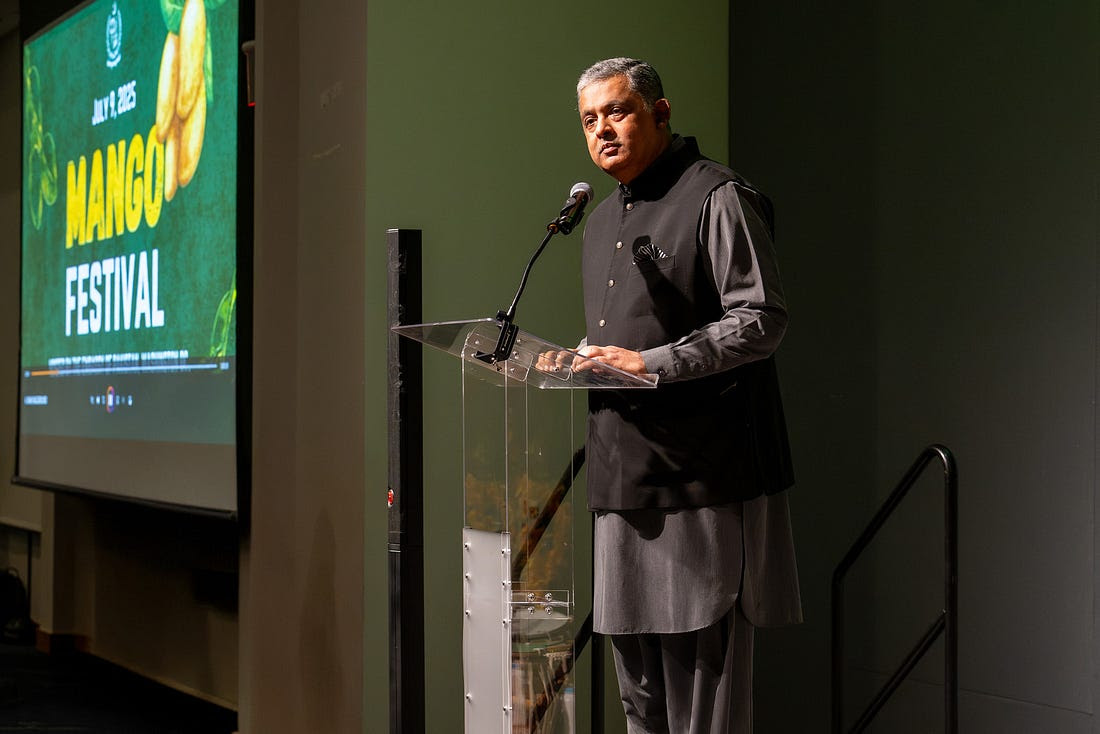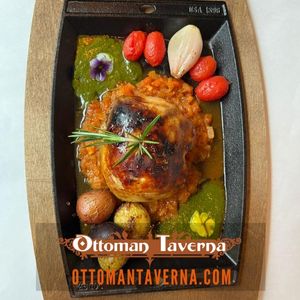Mango Madness
The latest from Hollywood on the Potomac.

Written by guest contributor Tamara Buchwald
A Night of Flavor and Festivity was celebrated at The Pakistan Mango Festival 2025 despite the hurricane level storms in Washington, DC lately. The District was alive with bright color, authentic culture and the irresistible aroma of ripe fruit as the Embassy of the Islamic Republic of Pakistan hosted its annual Mango Festival – creating a joyful celebration of Pakistan’s most beloved fruit.
Hosted at the University of the District of Columbia, the event was a feast for the senses – a vibrant colorful sea of beautifully adorned saris, upbeat music, and the golden glow of perfectly ripened Pakistani mangoes.
The Ambassador of Pakistan to the United States, Rizwan Saeed Sheikh welcomed everyone highlighting the strength of the United States-Pakistan partnership. Mary Bischoping, Deputy Assistant Secretary for the Bureau of South and Central Asian Affairs, also spoke reiterating the continued cooperation between the two countries.
The Pakistan Embassy took the opportunity to highlight Pakistan’s agricultural exports and the importance of sustainable farming, with displays on mango cultivation, trade potential, and the role of Pakistani produce in global markets. Pakistan is the sixth largest producers of mangos in the world.
Why is Pakistan’s juiciest export also its greatest obsession?
In Pakistan, the arrival of mango season doesn’t just mark summer—it sets off a nationwide romance. From the sweltering groves of Multan to the fruit-laden bazaars of Sindh, the country produces over 1.8 million tons of mangoes annually, earning it a spot among the top six producers worldwide. But this isn’t about numbers. It’s about nostalgia. It’s about the perfect Chaunsa, chilled in an ice bucket, peeled by hand, and devoured in silence like a sacred rite.
Pakistan’s prized varieties—Sindhri, Anwar Ratol, Langra, and Chaunsa—are the stuff of regional pride and international envy. Some are so soft they collapse under their own weight. Others are so sweet they seem spiked with syrup. And while more than 80,000 tons are exported each year (in 2020 and targeting 125,000 tons this year), the best often stay home—gifted between friends, hoarded in fridges, and, on occasion, shipped in velvet-lined crates to foreign dignitaries in an act known as mango diplomacy.
Read more here.





